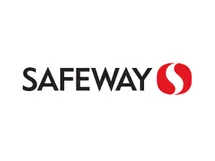
Grocery Shopping Saving Tips
Similar categories
Beer & Wine
Coffee & Tea
Drinks
Fast Food
Gourmet Food
Kellogg's
Pepsi
Pizza
Restaurant
Sweets
Takeaway & Delivery
Tobacco
Popular Shops
Display all Grocery online storesGrocery Coupon Codes
Take $15 off First 3 Orders at Meijer
$75 MOV
Get $10 off First 3 Delivery or Pickup Orders with this Promo Code
Without MOV
Seasonal Savings: Free Shipping on Select Orders
$25 MOV
Join as a new Executive Member and enroll in auto renewal to receive a $20 Digital Costco Shop Card Or, a new Gold Star Member and enroll in auto renewal to receive a $10 Digital Costco Shop Card
Expires on 12/31/2025
Sam's Club Offer - Free Shipping
Without MOV
Save NOW: 20% off Any Order with 1 Pantry Essential for Boxed up Customers
Without MOV
Receive $10 off for Military with this Discount Code
Expires on 12/31/2025
$25 off Your First Order with Klarna at Instacart
$75 MOV
Snap $25 off Sitewide
Without MOV
Today's special: $30 off First Order with Driveup and Go!
$75 MOV
Get $5 off with Newsletter Sign-Up with this Promo Code
$25 MOV
Kroger Discount: Free Shipping
$35 MOV
Enjoy $25 off Club Card Membership plus $10 Welcome Bonus
$25 MOV
Up to 5% Back in Rewards Promo Code with The Club+ Card Membership for BJ's One+™ Mastercard® Owner at BJs Wholesale
Expires on 12/31/2025
Green Chef: Free Graza Olive Oil Set + 50% off your 1st Box
Without MOV
Free $10 Gift Card with Sam's Club Membership Sign-Up
Without MOV
Just in: Shop with Digital Coupons !
Without MOV
FreshDirect: Free Shipping On Your First Order
Without MOV
About Grocery coupons and discount codes
10 Shopping Tips to Maximize Your Grocery Budget
You only go to the grocery store once or twice a week—but those costs add up quick, even if you have a grocery budget in place. While 64 percent of respondents in our 2017 Grocery Savings Survey only go just 0 to 2 times per week, they typically spend up to $100 weekly. That’s $400, if not more (21 percent of respondents spend up to $150) over the course of the month.
If you’re ready to spend less without sacrificing, check out these simple tips to maximize your grocery budget.
1. Plan a Meat-Free Day
Eating meat every day increases the risk of cancer, it hurts the environment and your wallet. When asked about their biggest grocery store expense, 45 percent of respondents said that meat is the most costly. To cut this cost, plan at least one meat-free day each week. Create a hearty vegetable soup or stir fry with rice, both of which are meat-free and inexpensive to make.
If you don’t want to go meat-free, focus on options that are less expensive. In our 2017 Carving Up the Cost of Turkey report, we found that a pound of whole, frozen turkey is just $1.62, with the same amount of chicken coming in at $3.12, ground beef at $3.66 and pork chops at $3.76. To save, focus on the leaner meats, like chicken and turkey.
2. Know the In-Store Discounts
Using in-store discounts is the number one way our survey respondents maximize their grocery budget. They key is knowing what goes on sale when; most stores follow a weekly schedule that you can take advantage of:
“Kroger, Giant, Safeway and Acme Markets double or triple coupon face values in some states, usually on specific days and to specific limits. For example, on a double coupon day, a $1 off coupon would be worth $2 off (though most stores generally allow doubling only of coupons worth less than $1),” explains Naomi Mannino, personal finance contributor at Bankrate.
3. Try “Blended Shopping”
By “blended shopping” we mean buying some items in-store and some online. For example, Amazon Fresh’s prices are hard to beat. Use their free 30-day trial to see if you like their ordering and delivery process and supplement with in-store grocery shopping for anything you can’t find online or prefer to purchase locally. (Don’t forget to use our Amazon Fresh coupon when you run out of your 30-day trial!) This blend may be just what you need to cut back on costs while getting everything you need.
4. Get a Rewards Card
Some grocery stores offer special discounts to loyalty card holders, including exclusive discounts, cash-back and other in-store rewards that help you save. In many cases, it takes less than five minutes to sign up, making it a simple way to spend less every time you shop.
5. Ask for “Ugly Produce”
Some grocery stores keep “ugly produce,” or products that may look unappealing to shoppers, out back because they won’t sell as well. However, this food is just as good as what you see on the shelf—in most cases, it’s simply shaped weird or is slightly discolored. Ask if you can get a discount on these items if they have any in the back. Since they won’t sell them to the general public, you may be able to save a lot while getting the exact same item you would normally pay full price for.
6. Use a Shopping List
Sticking to a list is the way 18 percent of our survey respondents save money at the grocery store and 45 percent already do this to stick with their grocery budget. It’s easy to overspend when you don’t have a plan, so start here. Maitland Greer of Good Housekeeping explains:
“The most important part of your pre-grocery routine should be making a list. Making one ensures you'll buy only what you need and helps prevent your eyes from wandering to additional items.”
7. Plan Around Weekly Deals
To save even more with your shopping list, write it as you thumb through the weekly circular for your grocery store. Use the current deals as inspiration for budget-friendly meals. In most cases, you’ll have dozens of options with just a few ingredients, so even if you’re not in the mood for what you originally planned, you can cook something else.
8. Shop in Your Pantry
Don’t go to the store until you know what you already have in your house. Not only will you avoid avoid spending on items that you don’t need, but you can avoid wasting food (and money): Americans toss nearly 25 percent of what they buy at the store, according to National Resources Defense Council. Key takeaway here: don’t dig into your grocery budget until you absolutely have to.
9. Reconsider Your Loyalty
Are you getting the best prices at your favorite grocery store? Or could you save more somewhere else? To find out, Kerri Anne Renzulli recommends doing the following test:
“Pick the 10 or so items you most commonly buy (e.g. milk, cereal, bananas, chicken, detergent) and make a one-time mission to a few stores in your area (supermarket, Walmart, Target, Costco, dollar store) to compare the prices.”
Track the costs with spreadsheet, and after shopping at 3 or 4 locations, compare the totals, and start doing groceries wherever you saw the greatest savings.
10. Shop With Cash
It’s easy to go over your grocery budget when you have what feels like an unlimited supply of money to spend—AKA a credit card. Spend less, and still get what you need, by grocery shopping with cash only.
Buy only what you’ve budgeted for and put back what doesn’t fit within that limit. In many cases, staying within your budget will just be a matter of choosing a different brand or tweaking a recipe to include less expensive ingredients. Money Savings Mom suggests doing this for three months. See how much you saved compared to the three months previous, and stick with it if the cost difference was significant.
All Grocery Shops
Albertsons
BJs Wholesale
Blue Apron
Bob Evans
Boxed
Costco
Crowd Cow
David's Cookies
Diet Direct
Dollar Days
Dollar General
Dollar Tree
Family Dollar
Fred Meyer
Fresh N Lean
FreshDirect
FSA Store
G Fuel
Gorillas
Green Chef
Hello Fresh
Instacart
Kroger
Magic Spoon
Meijer
Misfits Market
Noom
Postmates
Publix
Safeway
Sam's Club
Shipt
Snap Kitchen
Soylent
The Fruit Company
Thrive Market
Vons.com
Whole Foods
Yamibuy
Yelloh














